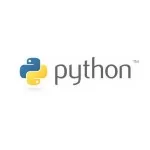Static vs. Dynamic: Rendering Approach for Your Python Project
Static Site Generation (SSG) and Server-Side Rendering (SSR) are two popular approaches for building websites with Python. Let’s delve into the world of Poetry and Flit, the powerhouses behind dependency management for Python projects, to understand how they can influence your choice between a static or server-rendered website. This guide will equip you with the knowledge to pick the right tool and rendering approach for your specific needs.
1. Understanding SSG and SSR
We will try to explain their diffrences by using an example.Think of a printed brochure versus a website. Static Site Generation (SSG) is like a brochure. The content is printed beforehand, with all the information and visuals locked in. It’s fast to hand out (loads quickly) and perfect for presenting static information that doesn’t change frequently. However, you can’t update the brochure on the fly – interactivity is limited.
Server-Side Rendering (SSR) is more like a website. The content can be generated or updated on the server whenever someone visits the page. This allows for more dynamic and interactive features. Imagine a website that shows you local news articles based on your location – that’s the power of SSR! However, just like a website can take a moment to load, SSR websites might have slightly slower loading times compared to static brochures (SSG).
3. When to Choose SSG
Static Site Generation (SSG) excels in specific website types, offering advantages in speed, SEO, and cost-effectiveness. Here’s a breakdown of the scenarios where SSG shines:
| Scenario | Advantage |
|---|---|
| Content-heavy websites with frequent updates (blogs, portfolios) | Pre-rendered content ensures fast loading times, ideal for delivering text-rich content efficiently. Updates are made during the build process, keeping the site fresh. |
| SEO-friendly | Search engines love pre-rendered content! SSG websites are easily crawled and indexed by search engines, boosting your website’s visibility in search results. |
| Ideal for cost-effective hosting | Static websites can be hosted on affordable static hosting platforms like Netlify or Vercel. No servers are required to run the site, minimizing ongoing costs. |
How Poetry and Flit Assist SSG Development
Both Poetry and Flit play a crucial role in managing dependencies for SSG projects. These tools help you:
- Declare Dependencies: Specify the libraries and frameworks your SSG website needs to function.
- Resolve Conflicts: Poetry and Flit ensure compatibility between different library versions, preventing issues during the build process.
- Install and Manage Dependencies: They handle the installation and management of all required dependencies, simplifying the development workflow.
Poetry and Flit act like your project managers, ensuring you have all the necessary materials (dependencies) at hand and organized for a smooth build process. They streamline dependency management, allowing you to focus on creating compelling content for your static website.
Here’s a simple SSG example using Next.js:
01 02 03 04 05 06 07 08 09 10 11 12 13 14 | // pages/index.jsimport Head from 'next/head';export default function HomePage() { return ( <div> <Head> <title>My Static Website</title> </Head> <h1>Welcome to my static website!</h1> </div> );} |
In this example, next would be listed as a dependency in your pyproject.toml (Poetry) or setup.py (Flit) file. Running poetry install or flit install would download and install the next library and any other required dependencies for your project.
4. When to Choose SSR
Server-Side Rendering (SSR) shines when you need to build highly interactive and dynamic websites. Here’s a look at the scenarios where SSR excels:
| Scenario | Advantage |
|---|---|
| Highly interactive applications with real-time data updates | SSR allows for dynamic content generation based on user interaction. Imagine a stock market tracker or a chat application – SSR provides the foundation for these real-time experiences. |
| E-commerce websites requiring dynamic user experiences | Personalized product recommendations, shopping carts, and user accounts – SSR empowers e-commerce websites to deliver a seamless and interactive shopping experience for each user. |
| Social media platforms needing personalized content | SSR enables social media platforms to tailor content feeds and user interfaces based on individual users and their preferences. |
How Poetry and Flit Assist SSR Development
Just like with SSG, Poetry and Flit are valuable assets for building server-rendered Python applications. Here’s how they contribute:
- Dependency Management: Similar to SSG, they manage the dependencies required for your SSR framework and any additional libraries your application uses.
- Server-Specific Dependencies: SSR often involves additional server-side dependencies like database libraries or web server frameworks. Poetry and Flit can handle these dependencies as well, ensuring a smooth development process.
- Virtual Environment Management (Poetry Only): Poetry offers built-in virtual environment management, which can be helpful for isolating project dependencies and avoiding conflicts between different projects on your system.
Think of Poetry and Flit as your supply chain managers for building SSR applications. They ensure all the necessary building blocks (dependencies) are delivered to the construction site (your development environment) efficiently, allowing you to focus on crafting the interactive features and dynamic functionalities of your server-rendered website.
Here’s a basic SSR example using Next.js with a server-side API route:
1 2 3 4 5 | // pages/api/hello.jsexport default function handler(req, res) { res.status(200).json({ message: 'Hello from the server!' });} |
Similar to the SSG example, manage dependencies using Poetry or Flit. Additionally, any server-specific dependencies like database libraries (if needed) would be listed in your configuration file.
4. Considerations Beyond Rendering
While SSG and SSR offer distinct advantages, your decision shouldn’t solely depend on the rendering style. Here are some additional factors to consider:
Project Complexity and Future Needs
The complexity of your project and its anticipated future needs will play a significant role in choosing the right approach. For websites with primarily static content and minimal updates, SSG shines with its simplicity and cost-effectiveness. Pre-rendered content ensures fast loading times, making it ideal for delivering text-rich content efficiently. Additionally, updates are straightforward as they involve rebuilding the static content.
On the other hand, highly interactive applications with real-time data updates or user accounts might benefit more from SSR’s dynamic nature. SSR allows for content generation on the server based on user interaction, enabling features like stock market trackers or chat applications. Similarly, e-commerce websites requiring dynamic user experiences, such as personalized product recommendations and shopping carts, can leverage SSR to deliver a seamless shopping experience. Social media platforms also heavily rely on SSR to tailor content feeds and user interfaces based on individual preferences.
Finally, consider your project’s future growth. If you anticipate your website evolving into a more dynamic platform in the future, SSR’s flexibility might be a better choice. However, it’s important to note that SSG sites can often be incrementally converted to SSR if needed.
Developer Experience and Familiarity
The learning curve associated with different frameworks is another factor to consider. SSG frameworks are generally considered easier to learn, especially for beginners. If you’re new to web development, starting with an SSG framework can be a smoother introduction. Additionally, if your development team already has experience and expertise with a specific SSG or SSR framework, leverage that knowledge for faster development. A familiar framework can streamline the development process and reduce the time spent learning new tools. Finally, consider the available resources for your chosen framework. Look for frameworks with good documentation, tutorials, and a supportive community to ensure you have the resources needed to overcome challenges.
Poetry and Flit: Dependency Management Across Rendering Approaches
Regardless of whether you choose SSG or SSR, both Poetry and Flit play a crucial role in dependency management:
- Streamlined Workflow: They automate dependency installation and management, saving you time and effort. No more manually downloading and installing libraries – these tools handle it all.
- Conflict Resolution: They ensure compatibility between different library versions. Version conflicts can break your website, but Poetry and Flit identify and resolve potential conflicts before they cause problems.
- Project Organization: They keep track of all project dependencies in a centralized location. This promotes better project organization and makes it easier to manage dependencies over time.
5. Conclusion
The journey of building a Python website involves choosing the right tools for the job. This guide has explored Static Site Generation (SSG) and Server-Side Rendering (SSR), highlighting their strengths and weaknesses. We’ve also considered additional factors like project complexity, developer experience, and future needs to help you make an informed decision.



